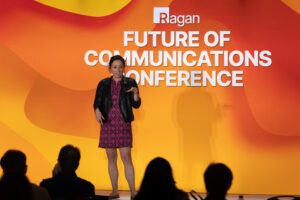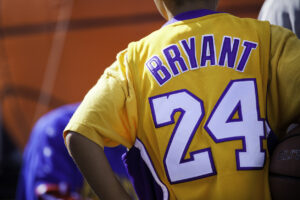When PR stunts go wrong — or very right
Carrying out a successful PR stunt is one of the trickiest feats in the biz. But it can pay off.

Kennyatta Collins is a freelance brand strategist. Follow him on LinkedIn.
Few tactics attract as much attention and cut through noise for a brand like PR stunts. Effective PR and communication strategies aim for sustained engagement and authentic connections with audiences. PR stunts are designed to attract immediate attention and media coverage through unusual or extraordinary means. The relationship between the end goal for PR teams and the use of stunts as a tactic provokes the question:
Do these big bets deliver value, or are they just a flash in the pan that could potentially backfire?
“With brand stunts, the primary objective is to drive buzz and talkability for your brand. That includes seeing the news in headlines, taking over feeds, and seeing the conversation and engagement pick up across social,” says Michelle Philippe, senior manager of brand PR and campaigns for Papa Johns. “The stunt allows your target consumers to engage with your brand in real life, so it should be built in a way that appeals to their likes and interests, thus building brand loyalty.”
Effective PR stunts captivate the masses while building on already-established messages a brand is known for. In this regard, getting the best results from one-off spectacles comes from the consistent efforts that precede them.
Take for instance Red Bull, a brand known for pushing the boundaries of extreme sports through athlete and event sponsorships and its famous “gives you wings” slogan. In 2012, Red Bull launched the Stratos project where Felix Baumgartner broke the sound barrier by jumping from the stratosphere. The stunt dominated social media and was a monumental live-stream event on YouTube, attracting 8 million simultaneous viewers, smashing the platform’s previous record of 500,000. It is estimated the stunt gave Red Bull tens of millions of dollars in earned media and a significant spike in brand recognition and consumer engagement. The stunt succeeded at confirming to its audience that Red Bull is who they believe it to be.
But by definition, stunts must be outrageous in some way to gain the notice of jaded audiences. The line between attention-grabbing and offensive can be razor-thin, and when miscalculated, the fallout can be severe.
Paramount Pictures’ 2017 attempt to promote the film “Ghost in the Shell” through an online meme generator backfired. The generator allowed users to upload their photos and superimpose them onto the thermoptic suit, making them look like the Major character. People quickly turned the tool into a platform to criticize Paramount Pictures for “whitewashing” and cultural insensitivity for casting Scarlett Johansson as an originally Japanese character. Memes circulated that mocked the disconnect between the film’s promotional efforts and the cultural sensitivity of the source material. While the meme generator itself wasn’t a bad idea, the lack of awareness in audience sentiment surrounding the casting of Scarlett Johanssonoffered a tailor-made opportunity for users to share their displeasure with the world, turning a solid stunt into a PR nightmare..
(Link to a tweet featuring the memes)
The Ghost in the Shell Website https://t.co/eqy8CpndC6 has a meme maker of sorts where anyone could “become Major” so I had some fun…. pic.twitter.com/EadKs04H9a
— valerie complex (@ValerieComplex) March 11, 2017
“Stunts are never a guaranteed slam dunk, but that’s the risk you take for a possible explosive outcome,” says Madi Boring, account manager at Hunt & Gather. “There should always be a thoughtful strategy in place that is brought to life via messaging and creative that supports the end goals.” While it is impossible for any idea worth its creative merit to please everyone, it has to be conscious of the different perspectives it will be exposed to. “My recommendation is to ensure you have a diverse group of voices feeding into all aspects of the stunt — from ideation to execution and everything in between,” says Boring.
While PR stunts can generate immediate buzz, translating this short-term attention into long-term brand loyalty and customer engagement is the challenge. Consumer attention is fleeting, and the impact of a one-off stunt might not endure unless it’s part of a broader, sustained campaign.
Airbnb recently seized the spotlight with a video showing a replica of the floating house from the 2009 Pixar film “Up” suspended high in the air as if floating by balloons. The video went viral across social as people speculated whether it was real, if it was an actual listing and really floated. Not only was it a fully functional home that guests could stay in, but it was one of many listings themed after some of the most iconic brands in entertainment and sports. The stunt cleared speculations and dodged the gimmick trap as it introduced the brand’s global “Icons” campaign — reflecting a deeper commitment by Airbnb to immersive experiences. The company expects more than 4,000 new bookings for their Icons listings and will be adding another 10 listings before the year’s end.
Step into your imagination. Introducing Icons pic.twitter.com/KOpkZ91UbT
— Brian Chesky (@bchesky) May 1, 2024
PR stunts, with their inherent drama and potential for high visibility, will always have a place in the toolbox of PR and communication teams. However, the temptation to chase viral moments can distract from the fundamental goals of building and maintaining a positive brand reputation. It will take more context-aware PR stunts that contribute to sustained brand growth to break through the noise and justify the risk that accompanies the massive rewards.






